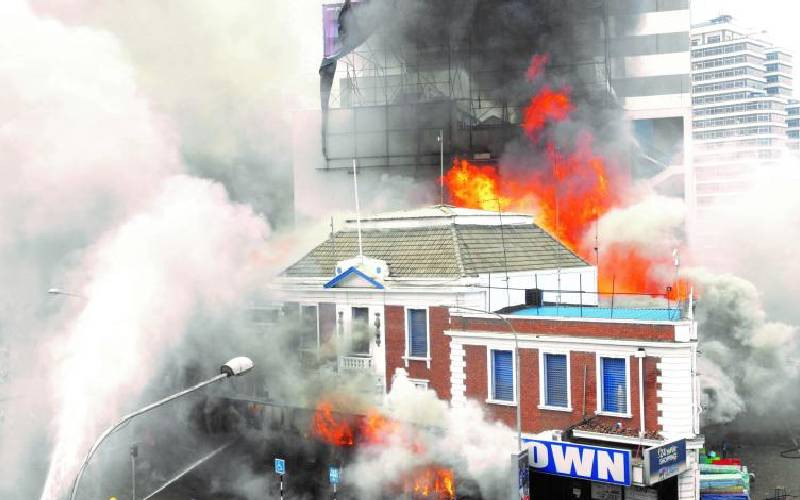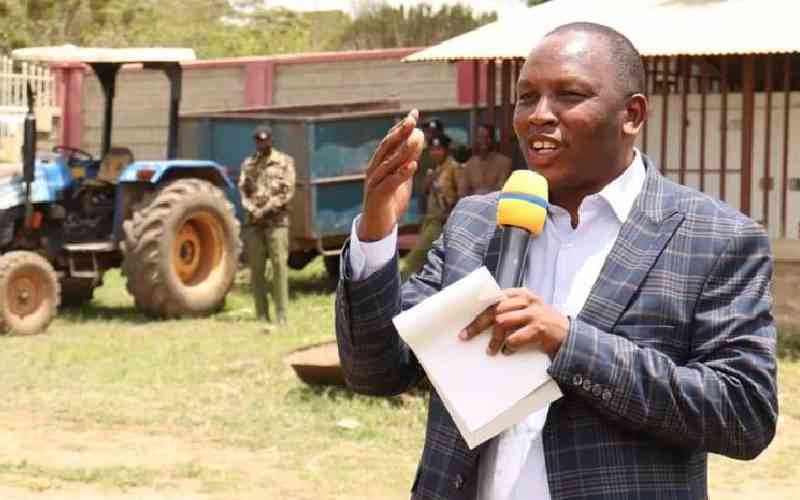The dangers of not having a comprehensive disaster management plan came to the fore on Wednesday when a critical section of East and Central Africa’s largest referral hospital was gutted by fire.
The hospital’s top management may be breathing a sigh of relief most of the critical and expensive equipment in the electrocardiogram unit of the Kenyatta National Hospital were salvaged. But they should be more concerned about their state of unpreparedness in the face of what could have been an international disaster.
For once, the much maligned city fire brigade was getting kudos for actually helping to prevent a disaster.
That in itself is a pitiful reminder of how a nation’s obsession with politics at the expense of other more critical social and economic ills can cripple its emergency response.
In this case, at least 5,000 patients would have needed evacuation, and there is no guarantee that all would have survived, given that some were on life support.
This newspaper has warned in the past that lip service to disaster readiness by the Government will continue to cost this country dearly. KNH is just one strategic institution whose collapse would spell a major setback for the country, health wise.
When the staff rushed to deploy emergency fire hoses, they discovered there was no water. How is it that a hospital of the stature of KNH does not have water?
But KNH is just a warning of the worst that could come in the future.
In truth, Kenya is unprepared to deal, not just with man-made emergencies like the one that hit KNH, but natural disasters as well, including drought, floods, epidemics, terrorism and major accidents.
There exists a National Disaster Operations Centre, but it is so ill-equipped and desperately short of funding, that it operates on an ad-hoc basis, relying mostly on volunteers and goodwill. The Disaster Prevention and Mitigation Unit of the Kenya Meteorological Department began churning out alerts on likely food shortages as a result of drought several months ago. But the Government sat back, did nothing then waited for hunger to set in before the Office of the President swung into action.
In such cases, one cannot be blamed for reading political undertones in the belated action to deliver food aid and buy livestock.
Short memories
As a nation, we are too obsessed with dancing to the egos of overfed, overpaid and grossly corrupt politicians rather than focusing on issues that ensure a better quality of life.
In 2009, when Nakumatt Downtown caught fire, many died because firefighters arrived late and ran out of water.
The terrorist attack of 1998 appears to have taught us nothing. God forbid, but should a bigger and more ferocious attack occur, one wonders how many lives would be lost.
Stay informed. Subscribe to our newsletter
We have also learnt little from the many buildings that have either collapsed due to shoddy construction, or caught fire.
The Cabinet received a draft of the National Disaster Management Policy in 2009, but wrangles and the competition to own projects within the Grand Coalition Government has ensured that not much of its recommendations have been implemented.
When will disaster containment programmes be harmonised and the implementing units be allocated sufficient resources to do their job?
The country needs a centralised office with access to early warning systems and maps of disaster hotspots, as well as a budget to coordinate or conduct training in disaster management.
Why is it that offices housing strategic Government services, including schools, and district and provincial hospitals have no viable fire and other disaster evacuation plans, and limited fire fighting equipment and training?
Where are the local disaster management teams that can reduce loss of lives and property by coordinating early responses?
The knee-jerk responses by Government to attacking this problem can best be tackled by immediate and prompt intervention by the Executive. If left to fester, tomorrow’s fire could ten times more devastating.
 The Standard Group Plc is a
multi-media organization with investments in media platforms spanning newspaper
print operations, television, radio broadcasting, digital and online services. The
Standard Group is recognized as a leading multi-media house in Kenya with a key
influence in matters of national and international interest.
The Standard Group Plc is a
multi-media organization with investments in media platforms spanning newspaper
print operations, television, radio broadcasting, digital and online services. The
Standard Group is recognized as a leading multi-media house in Kenya with a key
influence in matters of national and international interest.
 The Standard Group Plc is a
multi-media organization with investments in media platforms spanning newspaper
print operations, television, radio broadcasting, digital and online services. The
Standard Group is recognized as a leading multi-media house in Kenya with a key
influence in matters of national and international interest.
The Standard Group Plc is a
multi-media organization with investments in media platforms spanning newspaper
print operations, television, radio broadcasting, digital and online services. The
Standard Group is recognized as a leading multi-media house in Kenya with a key
influence in matters of national and international interest.









